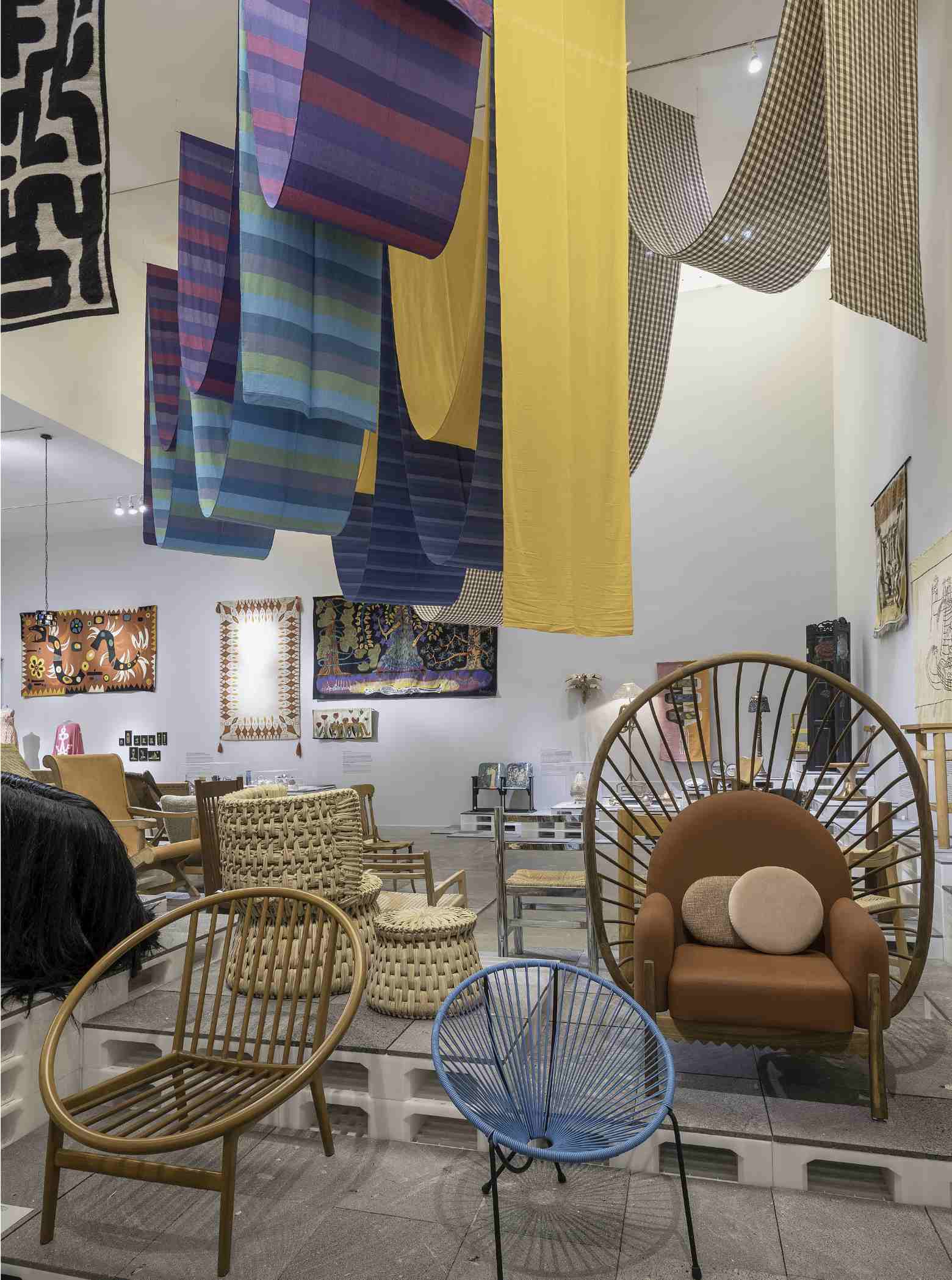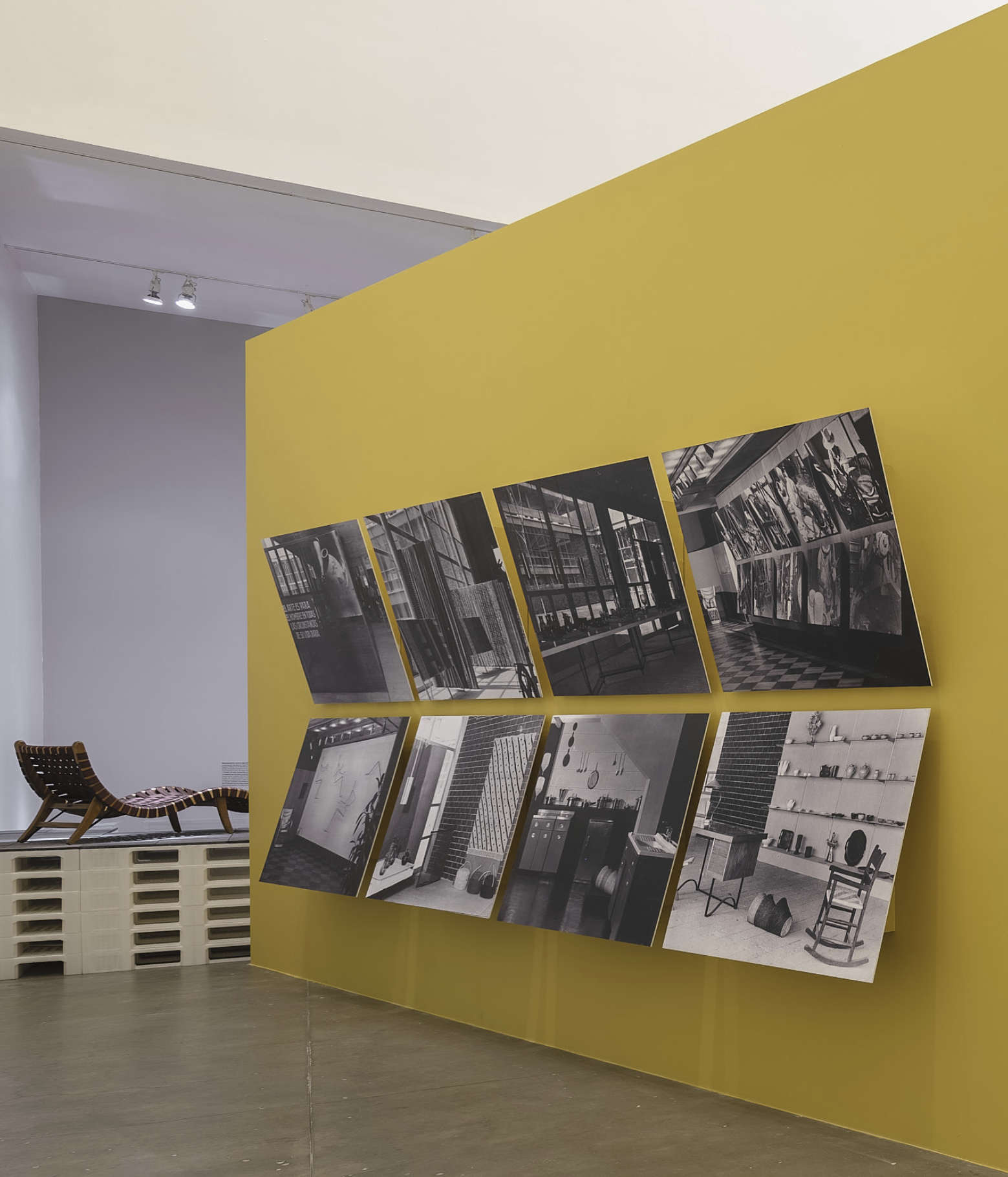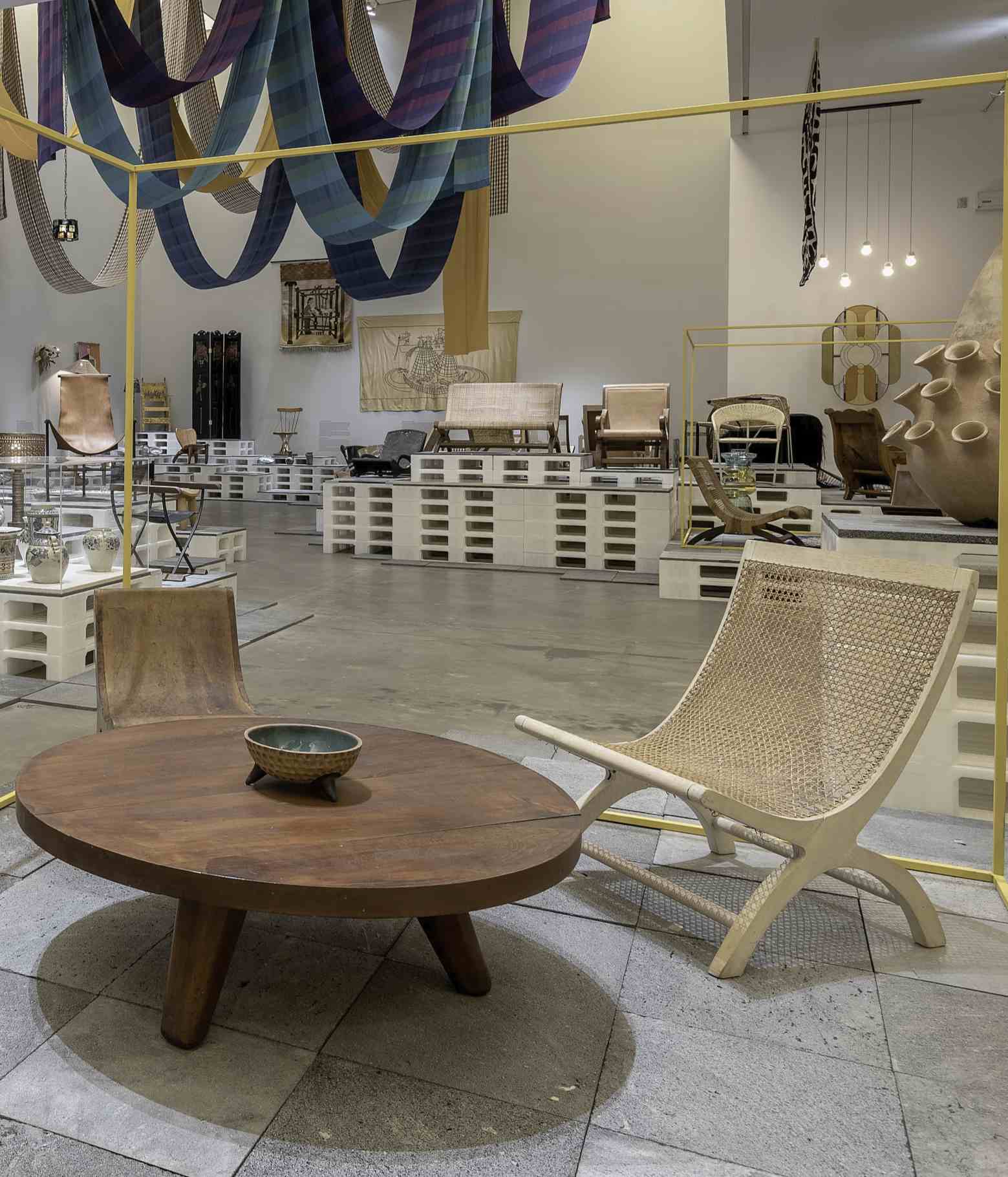Una modernidad hecha a mano
gallery 9
A Handmade Modernism.
Artisanal Design in Mexico, 1952–2022.
In Mexico, incorporating modernity into the design of the everyday environment involved a unification of local traditions and conditions with the dream of industrialization. That precedent of combining the needs of modern life with diverse aesthetics of a folk and craft inclination continues to inform design’s largely Mexicanist vocabulary in this country.

This exhibition proposes to review the notion of craft design that was produced and theorized in Mexico from 1950 to the present, tracing a genealogy of artists, designers, and craftspeople who strove to generate a hybrid, mestizo material culture and thereby create an imaginary for a new way of life.
This show’s starting point is the work of Clara Porset, the Cuban-Mexican designer who organized the country’s first design exhibition in 1952, El arte en la vida diaria: Exposición de objetos de buen diseño hechos en México. For Porset, the contents and layout of this show constituted an argument for what national design should pursue with regard to modernity. The designer sought to resolve the tension between industrialization and manual labor by way of a three-fold vision: design, craft-making, and industry should come together to offer society accessible, socially and aesthetically meaningful objects of design.
The second part of the exhibition consists of a guided tour through Porset’s earliest research into and arguments about the origin, revision, and analysis of Mexican vernacular furnishing, her decision to opt for a socially informed design, and her rallying cry for a national design movement associated with the past, with an eye toward building a functional, economically viable, and unobstructed present.

The third part explores how handmade products were revalued in the context of the developmentalist project of the mid-twentieth century. From 1950 to 1970, there was a push for mixed (industrial and craft) production in various parts of the country—much of which was linked to the arrival of foreigners—with projects for social and economic development that sought to stimulate the craft trades and drive commercial tourism. Mexico City, the Bajío region (Guanajuato, Michoacán, and Jalisco), Oaxaca, Morelos, and Guerrero were fundamentally the places where these design centers developed.
This exhibition concludes by opening out onto the panorama of Mexican design today, marked—consciously or unconsciously—by the foundations that Porset had laid down in her arguments about craft design and the modern design movement in Mexico. This section is an opportunity to identify a group of designers and objects that have continued to make use of local repertoires, craft practices, traditional materials, working by hand, and collaborative projects in order to nourish their work with a social and sustainable perspective while developing new languages.

It will also be an occasion to question the ongoing role that Porset’s manual-industrial identity project has played in the imaginary of “Mexicanness.”
A Handmade Modernism suggests that a Mexicanist school of design has existed for the past seventy years, ever since Porset proposed to incorporate a hybrid, mestizo vision of design into modern life. It therefore recognizes the value of the transgenerational continuity of that project while also questioning the ongoing adherence to that mark of origin.
Curator: Ana Elena Mallet





